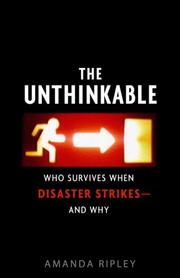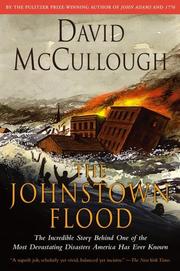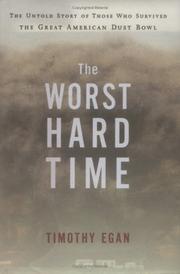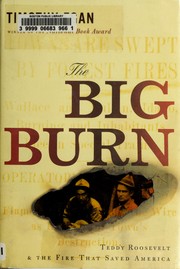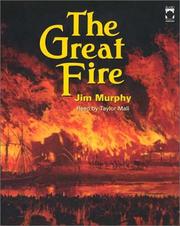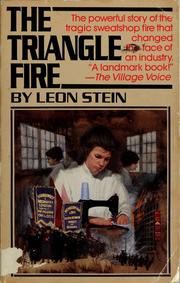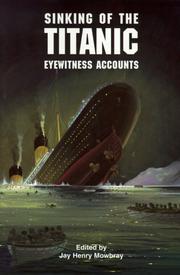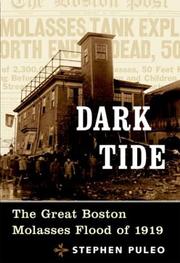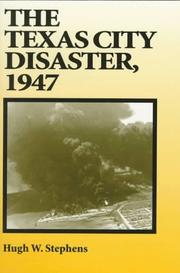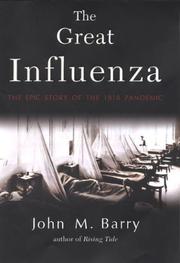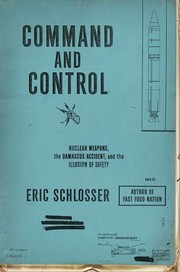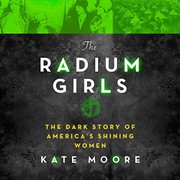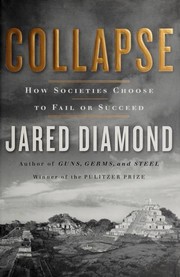Are you fascinated by stories of survival, resilience, and the impact of catastrophic events? Whether you’re a history buff, a science enthusiast, or just love a gripping tale, there’s something compelling about a good book on disasters. From natural calamities to man-made tragedies, these disasters books offer a captivating glimpse into the human experience in the face of adversity. In this article, we’ll explore the 20 best books about disasters that will leave you on the edge of your seat and pondering the resilience of the human spirit.
Contents
- 1 20 Best Books About Disasters
- 2 The Great Halifax Explosion
- 3 The Unthinkable: Who Survives When Disaster Strikes – and Why
- 4 The Johnstown Flood
- 5 The Perfect Storm
- 6 The Worst Hard Time
- 7 The Big Burn: Teddy Roosevelt and the Fire that Saved America
- 8 The Great Fire
- 9 The Children’s Blizzard
- 10 The Triangle Fire
- 11 The San Francisco Earthquake
- 12 The Sinking of the Titanic
- 13 The Great Molasses Flood
- 14 The Texas City Disaster, 1947
- 15 The Perfect Storm: A True Story of Men Against the Sea
- 16 Into Thin Air: A Personal Account of the Mount Everest Disaster
- 17 Fire and Fury: Inside the Trump White House
- 18 The Great Influenza: The Story of the Deadliest Pandemic in History
- 19 Command and Control: Nuclear Weapons, the Damascus Accident, and the Illusion of Safety
- 20 The Radium Girls: The Dark Story of America’s Shining Women
- 21 Collapse: How Societies Choose to Fail or Succeed
- 22 Conclusion
- 23
- 24 Books about Disability For Kids: 2024 Updated Guide to Essential Reading
- 25 Books on Allyship: 2024 Update of the Best Titles
- 26 20 Small Talk Best Books to Read – The 2024 Edition
20 Best Books About Disasters
The Great Halifax Explosion
by John U. Bacon
The Great Halifax Explosion by John U. Bacon is a captivating book about disasters that delves into the catastrophic events of December 6, 1917, when a French cargo ship loaded with explosives collided with another vessel in the Halifax Harbour, resulting in one of the most devastating man-made disasters in history. Bacon skillfully weaves together the personal stories of survivors and the heroic efforts of first responders, providing a gripping and emotional account of the tragedy and its aftermath. Through meticulous research and vivid storytelling, Bacon brings to life the harrowing experiences of those affected by the explosion, offering a compelling narrative that is both informative and deeply moving. The Great Halifax Explosion is a must-read for anyone interested in books on disasters and the resilience of the human spirit in the face of unimaginable adversity.
The Unthinkable: Who Survives When Disaster Strikes – and Why
by Amanda Ripley
The Unthinkable: Who Survives When Disaster Strikes – and Why by Amanda Ripley is a captivating exploration of human behavior in the face of catastrophe. This compelling book on disasters delves into the psychology of survival, drawing on real-life accounts and scientific research to uncover the factors that determine who lives and who doesn’t when faced with disasters. Through gripping narratives and expert analysis, Ripley offers valuable insights into how people respond to extreme situations, and what makes the difference between life and death. This thought-provoking book about disasters sheds light on the resilience of the human spirit and provides practical advice on how to better prepare for and respond to emergencies. Readers will be both fascinated and enlightened by the compelling stories and valuable lessons contained within this essential disasters book.
The Johnstown Flood
by David McCullough
The Johnstown Flood by David McCullough is a gripping book about disasters that tells the tragic story of the catastrophic 1889 flood in Johnstown, Pennsylvania. McCullough vividly depicts the events leading up to the disaster, the devastation caused by the bursting of the South Fork Dam, and the aftermath of the flood. Through meticulous research and powerful storytelling, the author brings to life the harrowing experiences of the survivors and the heroic efforts of the rescue teams. McCullough’s compelling narrative paints a vivid picture of the human cost of the disaster and the resilience of the people affected. This disasters book is a haunting and compelling account of one of the deadliest floods in American history, and a testament to the indomitable human spirit in the face of unimaginable tragedy.
The Perfect Storm
by Sebastian Junger
The Perfect Storm by Sebastian Junger is a gripping non-fiction book about a disastrous event at sea. This compelling narrative follows the crew of the Andrea Gail, a fishing boat caught in the midst of one of the most ferocious storms in history. Junger skillfully interweaves the personal stories of the crew members with the harrowing details of the storm, creating a heart-wrenching account of the power of nature and the human spirit. This book on disasters takes readers on a rollercoaster of emotions, from hope to despair, as the crew battles against the overwhelming forces of the sea. The Perfect Storm is a riveting and immersive read that offers a profound insight into the dangers and unpredictability of the ocean, making it a must-read for anyone interested in disasters or maritime history.
The Worst Hard Time
by Timothy Egan
The Worst Hard Time by Timothy Egan is a riveting book about one of the most harrowing environmental disasters in American history. Set during the Dust Bowl of the 1930s, this non-fiction narrative vividly portrays the catastrophic consequences of human actions on the land. Egan skillfully weaves together personal stories of individuals who endured the relentless dust storms, economic collapse, and the desperate struggle for survival in the unforgiving Great Plains. Through intimate accounts, the author captures the resilience and determination of the people who faced unimaginable hardships during this period of ecological devastation. This compelling and poignant book on disasters provides a haunting portrayal of the human impact on the environment and serves as a powerful reminder of the consequences of environmental neglect.
The Big Burn: Teddy Roosevelt and the Fire that Saved America
by Timothy Egan
The Big Burn: Teddy Roosevelt and the Fire that Saved America is a captivating book about disasters that chronicles the devastating 1910 wildfire that swept through the western United States, engulfing over three million acres of land. Author Timothy Egan expertly weaves together the personal stories of the firefighters, the political climate of the time, and the environmental impact of the fire. The book provides a gripping account of the heroic efforts to combat the blaze and the subsequent changes in U.S. forest management and conservation policies. Egan’s vivid storytelling and meticulous research bring to life the magnitude of the disaster and its lasting impact on American history. The Big Burn is a compelling and enlightening read for anyone interested in environmental history, firefighting, or the resilience of the human spirit in the face of book on disasters.
The Great Fire
by Jim Murphy
The Great Fire by Jim Murphy is a riveting non-fiction book about the catastrophic events of the Great Chicago Fire of 1871. Murphy vividly recounts the devastation caused by the fire, weaving together eyewitness accounts and historical records to create a compelling narrative. Through his meticulous research, the author provides a comprehensive analysis of the disaster, examining its causes and consequences. The book paints a vivid picture of the chaos and destruction that ensued, while also highlighting the resilience and bravery of the people affected. Readers will be drawn into the gripping storytelling and gain a deeper understanding of the impact of this historical disaster. The Great Fire is a must-read for anyone interested in history, urban development, or disasters, as it offers a captivating and informative exploration of this significant event in American history.
The Children’s Blizzard
by David Laskin
The Children’s Blizzard by David Laskin is a captivating book about a devastating snowstorm that struck the American plains in 1888. Laskin skillfully weaves together the stories of the families and children who were caught in the deadly blizzard, painting a vivid and heart-wrenching picture of the disaster. Through meticulous research and powerful storytelling, the author brings to life the harrowing experiences of those who faced the wrath of nature in one of the deadliest storms in American history. This gripping account of survival and tragedy amidst the fury of nature makes The Children’s Blizzard a compelling read for anyone interested in historical events and the human spirit in the face of calamity. This book about disasters is a poignant reminder of the resilience and courage of those who endured one of the most catastrophic events of the late 19th century.
The Triangle Fire
by Leon Stein
The Triangle Fire by Leon Stein is a harrowing account of one of the deadliest industrial disasters in American history. This book on disasters takes readers back to the year 1911, where a devastating fire broke out at the Triangle Shirtwaist Factory in New York City, claiming the lives of 146 garment workers. Stein delves into the appalling working conditions, the tragic loss of life, and the subsequent reforms that arose from this catastrophic event. With meticulous research and compelling storytelling, the author brings to light the human cost of industrialization and the resilience of the survivors and their families. The Triangle Fire is a poignant and powerful book about disasters that sheds light on a pivotal moment in labor history and the fight for workplace safety and justice.
The San Francisco Earthquake
by Gordon Thomas and Max Morgan-Witts
The San Francisco Earthquake by Gordon Thomas and Max Morgan-Witts is a gripping book about disasters that vividly recounts the catastrophic events of April 18, 1906. The authors skillfully paint a captivating picture of the bustling city of San Francisco, only to be shattered by the violent earthquake and subsequent fires that tore through the city. Through meticulous research and firsthand accounts, the book delves into the human stories of survival, resilience, and the unimaginable destruction that unfolded in the aftermath of the disaster. The authors masterfully capture the chaos, heroism, and the city’s remarkable recovery in the wake of one of the most devastating disasters in American history. The San Francisco Earthquake is a compelling and insightful book on disasters that will leave readers spellbound by the sheer power of nature and the indomitable spirit of the human heart.
The Sinking of the Titanic
by Jay Henry Mowbray
The Sinking of the Titanic by Jay Henry Mowbray is a gripping book on disasters that recounts the tragic events of one of the most infamous maritime disasters in history. Mowbray delves into the details of the Titanic’s ill-fated maiden voyage, from the ship’s construction to the iceberg collision and its catastrophic aftermath. Through vivid storytelling and meticulous research, the author brings to life the harrowing experiences of passengers and crew on that fateful night. This disasters book offers a comprehensive look at the series of events that led to the sinking of the unsinkable ship, shedding light on the human errors and technical failures that contributed to the tragedy. Mowbray’s compelling narrative and thorough examination of the Titanic disaster make this book about disasters a must-read for history enthusiasts and anyone fascinated by tales of survival and tragedy at sea.
The Great Molasses Flood
by Stephen Puleo
The Great Molasses Flood by Stephen Puleo is a riveting book about one of the most bizarre and devastating disasters in American history. Puleo meticulously recounts the events leading up to the catastrophic molasses tank explosion in Boston in 1919, which resulted in a deadly wave of molasses engulfing the city streets. With vivid storytelling and thorough research, Puleo brings to life the tragic consequences of corporate negligence and the human toll of the disaster. The book explores the aftermath of the flood, including the legal battles and the impact on the community, making it a compelling read for anyone interested in historical disasters or industrial tragedies. Puleo’s gripping narrative and attention to detail make The Great Molasses Flood a must-read for those fascinated by disasters and their far-reaching effects.
The Texas City Disaster, 1947
by Hugh W. Stephens
The Texas City Disaster, 1947 by Hugh W. Stephens is a gripping book about one of the deadliest industrial disasters in American history. The book delves into the catastrophic events that unfolded on April 16, 1947, when a ship carrying ammonium nitrate exploded in the port of Texas City, Texas. Stephens meticulously details the chain of events leading up to the disaster, the immediate aftermath, and the long-term impact on the community. Through vivid storytelling and in-depth research, the author brings to life the harrowing experiences of those caught in the tragedy, as well as the heroic efforts of first responders and volunteers. This compelling book on disasters offers a comprehensive account of the Texas City Disaster, shedding light on the human cost and the resilience of a community in the face of unimaginable devastation.
The Perfect Storm: A True Story of Men Against the Sea
by Sebastian Junger
The Perfect Storm: A True Story of Men Against the Sea by Sebastian Junger is a gripping book about disasters that recounts the harrowing tale of the Andrea Gail, a fishing boat caught in the midst of a catastrophic storm in 1991. Junger skillfully weaves together the stories of the crew, the history of fishing in the region, and the science behind the “perfect storm” that ultimately led to the boat’s demise. Through vivid and intense storytelling, Junger captures the raw power and unpredictability of nature, as well as the bravery and resilience of those who face it head-on. The book paints a vivid and unforgettable picture of the disasters at sea and the human spirit’s remarkable ability to endure in the face of overwhelming odds.
Into Thin Air: A Personal Account of the Mount Everest Disaster
by Jon Krakauer
Into Thin Air by Jon Krakauer is a gripping book about disasters that recounts the author’s harrowing experience during the 1996 Mount Everest disaster. Krakauer, a journalist and seasoned climber, was on assignment to cover the commercialization of the world’s highest peak when a series of catastrophic events unfolded, resulting in the deaths of several climbers. The book offers a first-hand account of the perilous conditions and fatal decisions that led to the tragedy, as well as the physical and emotional toll it took on the survivors. Through vivid storytelling and introspective reflection, Krakauer delves into the complexities of human ambition, risk-taking, and the unforgiving power of nature. Into Thin Air is a riveting and thought-provoking disasters book that provides a haunting insight into the unpredictable and deadly forces at play in extreme environments.
Fire and Fury: Inside the Trump White House
by Michael Wolff
Fire and Fury: Inside the Trump White House by Michael Wolff is a scintillating exposé that takes readers behind the scenes of one of the most controversial presidencies in American history. This gripping book on disasters offers a no-holds-barred look at the chaos, infighting, and dysfunction within the Trump administration, painting a picture of a White House in turmoil. With unprecedented access to key players, Wolff delivers a riveting account of the power struggles, backstabbing, and political miscalculations that have defined the Trump presidency. Through meticulous research and explosive revelations, Fire and Fury offers a captivating and unvarnished portrayal of a White House in crisis. This book about disasters is a must-read for anyone interested in the inner workings of the Trump administration and the tumultuous events that have shaped American politics in recent years.
The Great Influenza: The Story of the Deadliest Pandemic in History
by John M. Barry
The Great Influenza: The Story of the Deadliest Pandemic in History by John M. Barry is a gripping book about disasters that delves into the devastating 1918 flu pandemic. Barry expertly weaves together scientific, historical, and personal accounts to paint a vivid picture of the widespread chaos and tragedy caused by the deadly virus. He explores the impact of the pandemic on society, medicine, and public health, while also shedding light on the heroic efforts of those who fought tirelessly to contain the outbreak. With meticulous research and compelling storytelling, Barry brings to life the horrors and human resilience in the face of one of the deadliest disasters in history. The Great Influenza is a powerful and timely reminder of the profound impact that disasters can have on the world and the resilience of the human spirit.
Command and Control: Nuclear Weapons, the Damascus Accident, and the Illusion of Safety
by Eric Schlosser
Command and Control: Nuclear Weapons, the Damascus Accident, and the Illusion of Safety by Eric Schlosser is a gripping book on disasters that delves into the terrifying world of nuclear weapons and the catastrophic accidents that have occurred. Schlosser provides a comprehensive overview of the history and development of nuclear weapons, while also focusing on the 1980 Damascus Titan missile explosion, a disaster that came perilously close to causing a nuclear detonation. With meticulous research and compelling storytelling, Schlosser uncovers the systemic failures and human errors that have plagued the nuclear arsenal, challenging the illusion of safety surrounding these weapons of mass destruction. This book about disasters is a sobering reminder of the grave consequences of mishandling such powerful and destructive technology, and the urgent need for greater accountability and safety measures.
The Radium Girls: The Dark Story of America’s Shining Women
by Kate Moore
The Radium Girls: The Dark Story of America’s Shining Women by Kate Moore is a gripping and harrowing account of the young women who worked in radium-dial factories during the 1920s. This book chronicles the tragic consequences of their exposure to radium, a disaster that affected not only their own lives but also led to groundbreaking changes in labor and health laws. Moore’s meticulous research and compelling storytelling bring to light the courage and resilience of these women as they fought for justice and accountability. The Radium Girls is a powerful and haunting portrayal of a dark chapter in American history, shedding light on the devastating effects of corporate greed and the resilience of the human spirit in the face of adversity. This book about disasters is a poignant and important read that will leave a lasting impact.
Collapse: How Societies Choose to Fail or Succeed
by Jared Diamond
Collapse: How Societies Choose to Fail or Succeed is a compelling exploration of the factors that lead to the downfall of civilizations throughout history. In this thought-provoking book, Jared Diamond delves into the causes of societal collapse, drawing on examples from ancient and modern societies around the world. He examines the environmental, political, and social forces that contribute to the decline of civilizations, offering valuable insights into the choices that ultimately determine their fate. Through meticulous research and engaging storytelling, Diamond presents a comprehensive analysis of the patterns and warning signs that precede societal collapse. This book is a must-read for anyone interested in the intricacies of human history and the lessons we can learn from past experiences. Collapse is an illuminating and thought-provoking read that will challenge your perceptions and provide a deeper understanding of the complexities of societal disasters.
Conclusion
Exploring the 20 best books about Disasters has been an eye-opening journey through some of the most impactful and harrowing events in history. From natural calamities to man-made catastrophes, these books offer a compelling and insightful look into the human experience in the face of adversity. Whether you’re interested in the science behind these events or the human stories that emerge from them, these books provide a comprehensive and thought-provoking exploration of disasters. Dive into these gripping reads and gain a deeper understanding of the power of resilience and the fragility of our world.
Which Disasters book is best?
The best book on Disasters can vary with personal preference, but three widely recommended titles are:
- The Great Halifax Explosion by John U. Bacon,
- The Unthinkable: Who Survives When Disaster Strikes – and Why by Amanda Ripley,
- The Johnstown Flood by David McCullough.
Each offers valuable insights and could be a great starting point.
What are the best books to learn about Disasters?
For those looking to learn about Disasters, there is a wealth of literature that can provide a comprehensive understanding of the subject. Some of the most highly recommended books include:
- The Great Halifax Explosion by John U. Bacon,
- The Unthinkable: Who Survives When Disaster Strikes – and Why by Amanda Ripley,
- The Johnstown Flood by David McCullough,
- The Perfect Storm by Sebastian Junger,
- The Worst Hard Time by Timothy Egan,
- The Big Burn: Teddy Roosevelt and the Fire that Saved America by Timothy Egan,
- The Great Fire by Jim Murphy,
- The Children’s Blizzard by David Laskin,
- The Triangle Fire by Leon Stein,
- The San Francisco Earthquake by Gordon Thomas and Max Morgan-Witts
These books offer a range of perspectives on Disasters, covering various aspects and approaches to the subject.
What are the best books on Disasters?
The best books on Disasters include:
- The Great Halifax Explosion by John U. Bacon,
- The Unthinkable: Who Survives When Disaster Strikes – and Why by Amanda Ripley,
- The Sinking of the Titanic by Jay Henry Mowbray,
- The Great Molasses Flood by Stephen Puleo,
- The Children’s Blizzard by David Laskin,
- The Big Burn: Teddy Roosevelt and the Fire that Saved America by Timothy Egan.
Each offers unique insights into the subject. While these books on the topic of Disasters are highly regarded, it’s important to note that any list of ‘best’ books is subjective and reflects a range of opinions.
What are the best Disasters books of all time?
Choosing the best Disasters books of all time can vary depending on who you ask, but seven titles that are often celebrated include
- The Great Halifax Explosion by John U. Bacon,
- The Unthinkable: Who Survives When Disaster Strikes – and Why by Amanda Ripley,
- The Worst Hard Time by Timothy Egan,
- The Children’s Blizzard by David Laskin,
- The San Francisco Earthquake by Gordon Thomas and Max Morgan-Witts,
- The Great Molasses Flood by Stephen Puleo,
- and The Sinking of the Titanic by Jay Henry Mowbray.
Each of these books has made a significant impact in the field of Disasters and continues to be influential today.


